Fortunately, Budget meal planning can help you stop overspending on groceries without sacrificing nutrition or flavor. If you’re tired of watching your grocery total skyrocket at checkout, you’re not alone.
As a result, that’s where planning ahead can make all the difference. While spending too much on groceries, but worried that cutting costs means sacrificing nutrition or taste?
Fortunately, budget meal planning offers a solution. It’s a practical way to feed your family amazing meals while slashing your food budget.
Budget meal planning is the solution, a way to feed your family amazing meals while slashing your food budget.
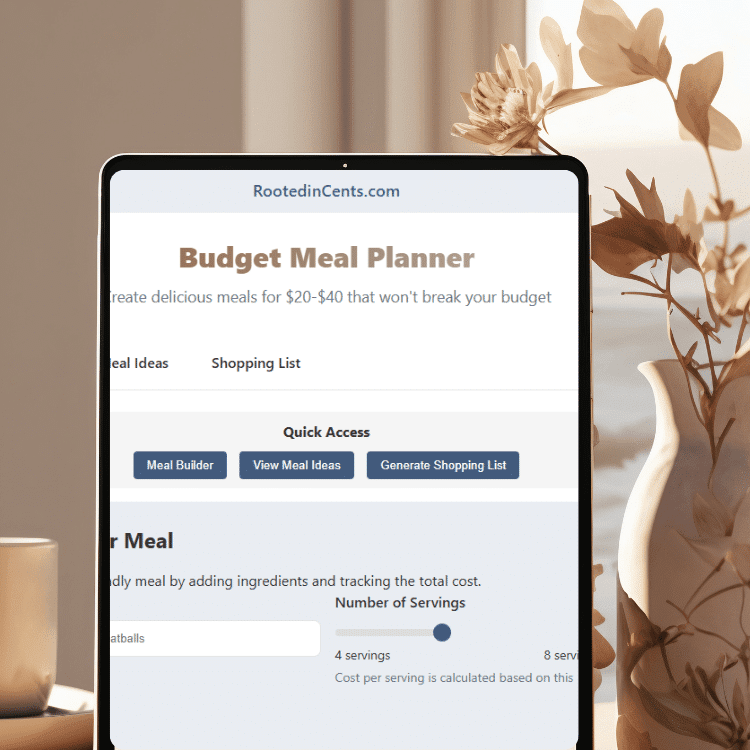
Picture this: you’re standing in the checkout line in the grocery store, watching the total climb higher and higher. $180 for a week’s worth of groceries for your family, again. Instead, you planned to spend $120, but somehow organic apples, name-brand cereal, and that impulse purchase of fancy cheese pushed you over budget.
If that sounds familiar, you’re not alone. That’s because the average American family spends over $7,700 annually on groceries, and many spend significantly more. Food has become the budget category that feels impossible to control. You need to eat, your family has preferences, and healthy food seems expensive.
But here’s what the families who’ve mastered budget meal planning know: you can cut your grocery bill by 30-50% while actually eating better food. The secret isn’t couponing for hours or eating ramen every night. It’s understanding how the food system works and using that knowledge strategically.
Why Your Current Grocery Strategy Is Costing You Thousands
Before we dive into solutions, to understand the root problem, let’sproblem, let’s talk about why most families struggle with food costs, and it’s not what you think.
The Convenience Tax
Every time you grab pre-cut vegetables, individually packaged snacks, or pre-marinated meat, you’re paying what I call the “convenience tax.” These items can cost 200-400% more than buying the basic ingredient and doing simple prep yourself.
A bag of pre-cut carrots costs $3-4. A 2-pound bag of whole carrots costs $1-2 and provides twice as much food. Five minutes of washing and chopping saves you $2 and gives you fresher, longer-lasting vegetables.
The Marketing Trap
The grocery store’s agenda is to make you spend more. End-cap displays aren’t featuring good deals; they’re featuring high-profit items. Eye-level shelves hold the expensive brands. “10 for $10” sales make you think you need to buy 10 items when you could buy just one for $1.
Store brands offer identical quality to name brands 80% of the time but cost 20–40% less. Yet, most families stick with familiar brands out of habit rather than preference.
The Waste Factor
The average family wastes about $1,500 worth of food annually. Leftovers that go bad, produce that spoils, bread that gets moldy, it adds up fast. This waste often happens because you’re buying without a plan, shopping when hungry, or not understanding how to properly store and use ingredients.
The Restaurant Substitution Problem
When you don’t have a meal plan, you end up ordering takeout or going to restaurants more often. A $40 restaurant meal for the family could have been an $8 home-cooked meal with the same level of satisfaction—if you’d had ingredients and a plan.
The Strategic Meal Planning System That Changes Everything
Effective meal planning isn’t about Pinterest-perfect prep containers or complicated spreadsheets. It’s about creating a simple system that saves money while reducing daily decision fatigue.
The Sales-First Planning Method
Most people plan meals, then shop for ingredients. Smart budget cooks flip this: they check store sales first, then plan meals around discounted ingredients.
Specifically, here’s how it works:
- Check store flyers before planning. Look for proteins on sale, seasonal produce specials, and pantry staples at reduced prices
- Build meals around sale items. If chicken thighs are $0.99/pound, plan 2-3 chicken-based meals. If bell peppers are half-price, incorporate them into multiple dishes
- Stock up strategically: When non-perishables you use regularly go on deep discount (40%+ off), buy several to last until the next sale cycle
- Plan for leftovers intentionally: Cook extra protein to use in tomorrow’s lunch or transform into a completely different meal
The Flexible Framework Approach
Instead of planning specific meals for specific days, create a weekly framework that allows for flexibility:
- Protein nights: Monday = chicken, Tuesday = eggs/beans, Wednesday = ground meat, etc.
- Cooking method rotation: One slow cooker meal, one sheet pan meal, one stovetop meal, one no-cook meal
- Cuisine themes: Mexican Monday, Italian Tuesday, Asian Wednesday, helps narrow down infinite possibilities
- Prep-level planning: Busy day = 15-minute meal, relaxed day = more involved cooking
This framework gives you structure without rigidity, making it easier to adapt when sales change or life gets busy.
The Ingredient Overlap Strategy
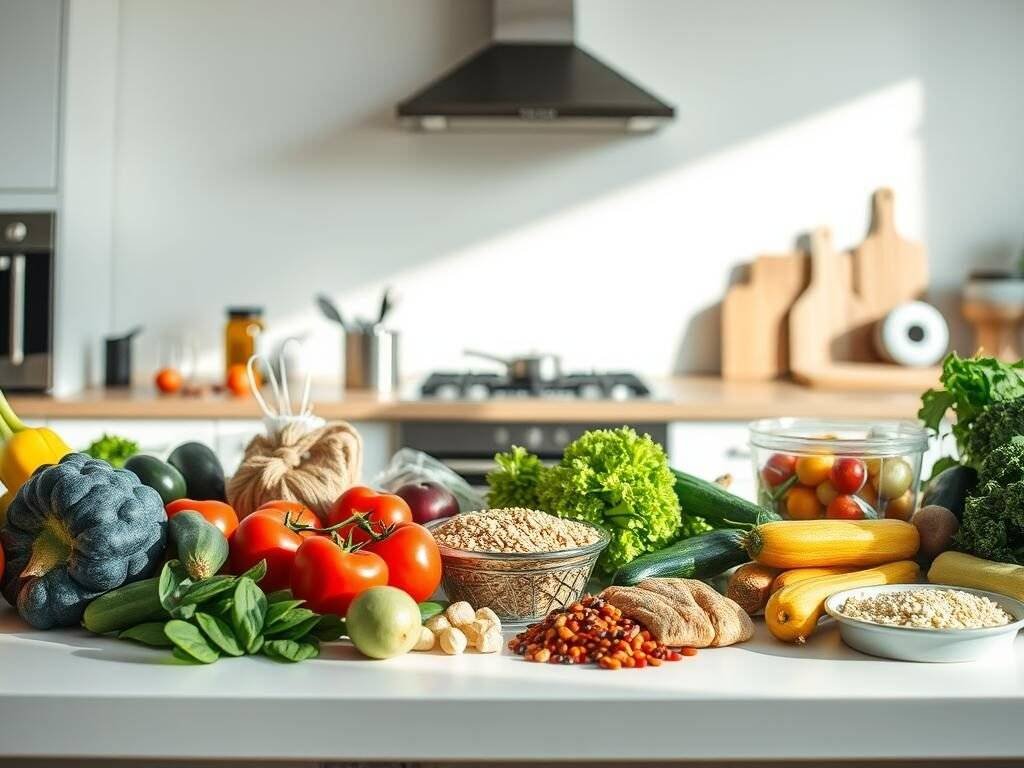
Plan your week so ingredients appear in multiple meals, reducing waste and maximizing bulk buying savings:
- Bell peppers: Fajitas Monday, stir-fry Wednesday, pizza Friday
- Ground beef: Tacos Tuesday, pasta sauce Thursday, breakfast hash Saturday
- Rice: Side dish Monday, fried rice Wednesday, stuffed peppers Friday
- Onions: Base for most savory cooking—buy in bulk and use throughout the week
Master Class in Strategic Grocery Shopping
How you shop matters as much as what you buy. These strategies can cut your grocery bill immediately without changing what you eat.
Understanding Store Pricing Cycles
Grocery stores follow predictable pricing patterns:
- Meat sales cycle every 6-8 weeks: When your preferred protein goes on sale, buy enough to last until the next sale
- Pantry staples cycle every 12 weeks: For instance, canned tomatoes, pasta, rice, and frozen vegetables rotate through sales
- Seasonal produce timing: Buy strawberries in spring, tomatoes in summer, apples in fall for best prices and quality
- Holiday tie-in sales: Baking supplies before Thanksgiving, grilling items before Memorial Day
The Strategic Shopping List System
To help you find what you need, organize your shopping list by store layout. Minimize time and reduce impulse purchases:
- Produce section: Shop here first when items are freshest and your cart isn’t full
- Perimeter shopping: Most whole foods (dairy, meat, produce) are around the store’s edges
- Inner aisles strategically: Have a specific list and stick to it; this is impulse purchase territory
- Frozen section last: Keep frozen items cold and prevent impulse purchases when you’re tired
The Unit Price Mastery
Bigger packages aren’t always better deals. Learn to quickly calculate unit prices:
- Compare per pound, per ounce, or per item. Not per package
- Factor in usage: A great deal on something you won’t use isn’t a deal
- Consider storage: Bulk buying only saves money if food doesn’t spoil
- Account for prep time: Sometimes convenience items are worth the extra cost
Store Brand Strategy
Store brands can save 20–40% on your grocery bill, but the quality varies. Here’s how to shop for them strategically:
- Always try for basics: Flour, sugar, salt, baking soda, vanilla are commodities with little quality difference
- Test for frequently used items: If you use something weekly, even small savings add up significantly
- Read ingredient lists. Many store brands are made by name-brand manufacturers with identical ingredients
- Start with low-risk items: Canned tomatoes, pasta, rice, and items where preference matters less
Budget-Friendly Cooking That Actually Tastes Amazing
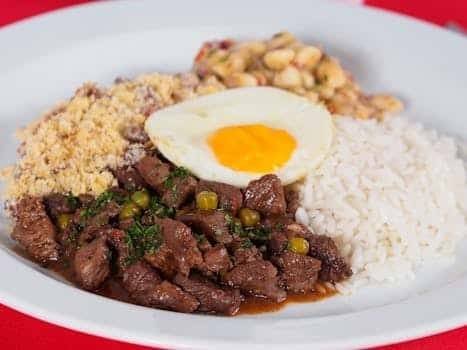
Cheap doesn’t have to mean boring. The world’s most beloved cuisines developed from peasant cooking, making inexpensive ingredients taste incredible.
The Foundation Ingredients That Transform Everything
Stock your pantry with these flavor-building basics that make any simple ingredient taste restaurant-quality:
- Aromatics: Onions, garlic, ginger, the base of most world cuisines
- Acid: Vinegar, lemon juice, lime juice, brightens and balances flavors
- Heat: Various pepper types, hot sauce, red pepper flakes
- Herbs and spices: Fresh herbs, dried spices, herb blends
- Umami boosters: Soy sauce, fish sauce, tomato paste, parmesan cheese
With these ingredients, you can transform basic proteins and vegetables into exciting meals from any cuisine.
The Budget Protein Power List
Protein is often the most expensive part of a meal, but these options provide excellent nutrition at a low cost:
- Eggs: $0.25-0.50 per serving, complete protein, versatile for any meal
- Dried beans and lentils: $0.15-0.30 per serving, high fiber, filling
- Chicken thighs: $1-2 per serving, more flavorful than breasts, harder to overcook
- Canned fish: $0.75-1.50 per serving, omega-3s, long shelf life
- Ground turkey: $1.50-2.50 per serving, lean protein, takes on any flavor
Batch Cooking Strategies That Save Time and Money
Cooking larger quantities reduces per-serving costs and creates convenient meals for busy days.
- Protein prep: Cook several chicken breasts or a pot of beans to use in multiple meals
- Grain cooking: Make large batches of rice, quinoa, or pasta to use throughout the week
- Additionally, prepping sauce bases in batches saves time and money
- Soup and stew multiplication: These dishes often taste better the next day and freeze beautifully
The Art of Strategic Leftovers
Transform leftovers into completely new meals instead of eating the same thing repeatedly:
- Roast chicken: Night 1 = roast dinner, Night 2 = chicken tacos, Night 3 = chicken soup from bones
- Rice transformations: Plain rice becomes fried rice, rice pudding, or stuffed pepper filling
- Vegetable versatility: Roasted vegetables become frittata filling, pasta sauce base, or grain bowl toppings
- Meat stretching: Small amounts of leftover protein can flavor large portions of pasta, rice, or soup
Seasonal Eating: Your Secret Weapon for Savings and Flavor
Eating seasonally isn’t just trendy, it’s the most effective way to get the best prices on the most flavorful ingredients.
Spring Savings Strategy (March-May)
In season and cheap: Asparagus, artichokes, spring onions, strawberries, spring greens
Menu planning focus: light, fresh meals after heavy winter foods. Simple preparations that highlight natural flavors.
- Asparagus pasta with lemon and parmesan
- Spring green salads with strawberry vinaigrette
- Simple grilled proteins with seasonal vegetable sides
Summer Abundance (June-August)
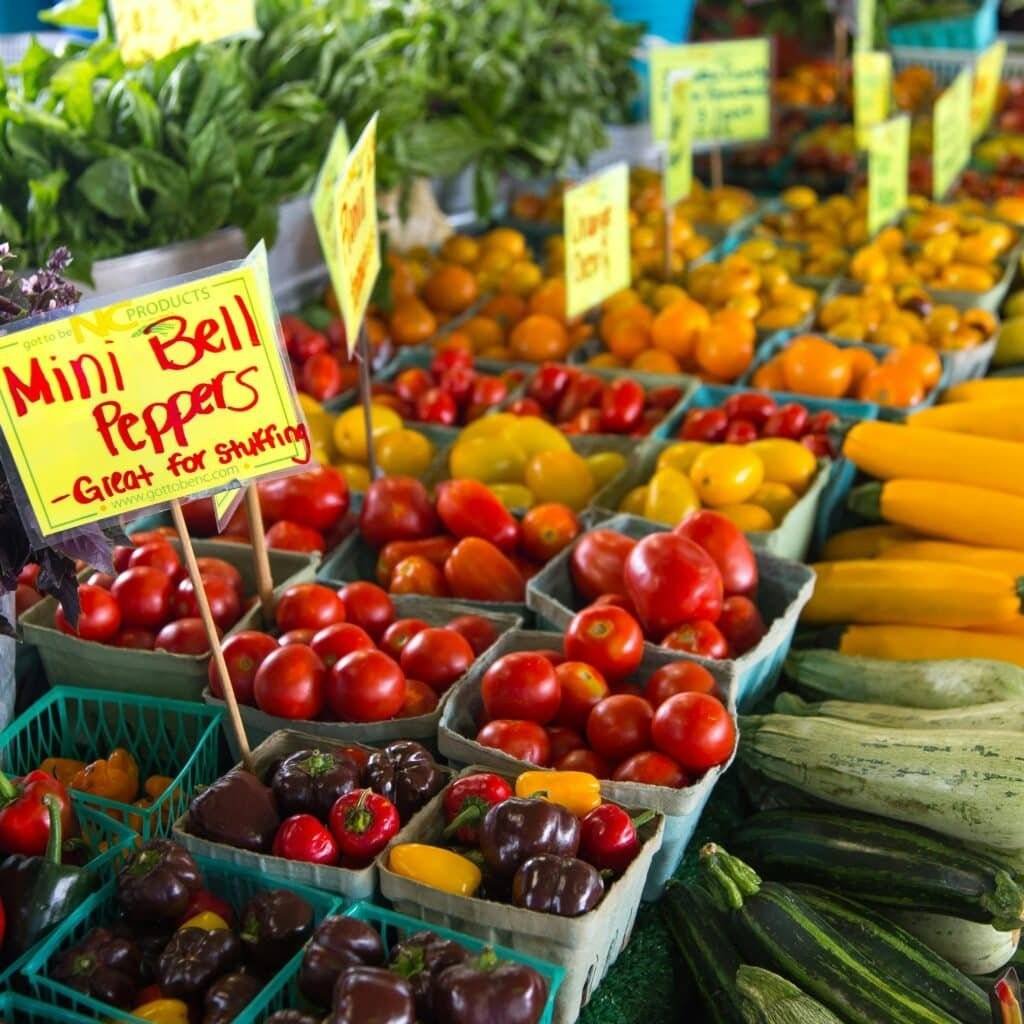
In season and cheap: Tomatoes, zucchini, corn, berries, stone fruits, cucumbers
Menu planning focus: no-cook and minimal-cook meals. These dishes include fresh salsas, salads, and grilled foods.
- Gazpacho using abundant cheap tomatoes
- Zucchini everything, bread, fritters, pasta sauce
- Fresh corn salads and grilled corn dishes
Fall Harvest (September-November)
In season and cheap: Apples, pumpkins, winter squash, root vegetables, cruciferous vegetables
Menu planning focus: hearty, warming foods. Roasting and braising. This is the season of comfort food.
- Roasted root vegetable medleys
- Apple-based desserts and side dishes
- Squash soups and winter vegetable stews
Winter Comfort (December-February)
In season and cheap: Citrus fruits, winter greens, stored root vegetables, cabbage
Menu planning focus: slow-cooked, warming meals. Use citrus to brighten heavy dishes.
- Hearty stews and braises
- Citrus-based marinades and dressings
- Cabbage-based dishes, coleslaw, stir-fries, soups
Advanced Money-Saving Techniques
These advanced tactics may help you save even more money on food once you’ve mastered the basics.
The Loss Leader Strategy
Stores use “loss leaders,” items sold at or below cost, to attract customers. Learn to identify and capitalize on these deals:
- Recognize patterns: Milk, eggs, and bread are common loss leaders
- Stock up appropriately: Buy extra when prices are genuinely below cost
- Avoid the trap: Don’t buy other full-price items just because you got a great deal on one thing
- Multiple store strategy: If practical, hit different stores for their loss leaders
Manager’s Special and Markdown Mastery
Learn when your stores mark down perishables and plan shopping trips accordingly.
- Timing patterns: Many stores mark down meat and produce at specific times
- Immediate use planning: Buy marked-down items you can use within 1-2 days
- Freezer utilization: Freeze marked-down meat immediately for later use
- Creative cooking: Very ripe produce is perfect for smoothies, baking, or soups
The Freezer as Your Money-Saving Tool
A well-organized freezer extends the value of sales and bulk purchases.
- Portion control: Freeze meat in family-sized portions for easy meal planning
- Prep ahead: Freeze chopped onions, grated cheese, and other frequently used ingredients
- Batch cooking storage: Freeze individual meal portions for busy nights
- Produce preservation: Freeze vegetables at peak ripeness for smoothies and cooking
Growing Your Own Savings
Even small-space gardening can provide significant grocery savings:
- High-value crops: Herbs, lettuce, and tomatoes provide the best return on investment
- Container gardening: No yard required, many vegetables grow well in pots
- Succession planting: Plant small amounts every 2 weeks for continuous harvest
- Preservation skills: Learn to freeze, can, or dry excess produce
Feeding Your Family Well on Different Budget Levels
No matter your income, the goal stays the same: eat well, spend wisely, and make every dollar count. Let’s look at how that plays out at different budget levels. Budget meal planning looks different at different income levels, but the principles remain the same: maximize nutrition and satisfaction per dollar spent.
Tight Budget: $50-75 per week for family of 4

Focus areas: Basic ingredients, minimal processing, careful planning
- Rice, beans, eggs, and seasonal vegetables as meal foundations
- One meat-based meal per week, stretched with vegetables and grains
- Homemade bread, yogurt, and other basics
- Creative use of leftovers and scraps
Sample weekly menu:
- Monday: Bean and rice bowl with sautéed vegetables
- Tuesday: Egg fried rice with frozen vegetables
- Wednesday: Lentil soup with homemade bread
- Thursday: Pasta with tomato sauce and vegetables
- Friday: Chicken thigh stir-fry (stretch with lots of vegetables)
- Saturday: Pancakes with fruit
- Sunday: Vegetable soup using scraps and leftovers
Moderate Budget: $100-125 per week for family of 4
Focus areas: More protein variety, some convenience items, better quality staples
- Protein at most meals, rotating between eggs, beans, chicken, ground meat
- More fresh produce variety
- Some store-bought bread and convenience items
- Occasional treats and higher-quality ingredients
Comfortable Budget: $150+ per week for family of 4
Focus areas: Quality and variety, some organic choices, convenience when needed
- Variety of proteins, including fish and better cuts of meat
- Organic produce for high-priority items
- Quality pantry staples and condiments
- Flexibility for special dietary needs and preferences
Meal Planning for Different Life Stages
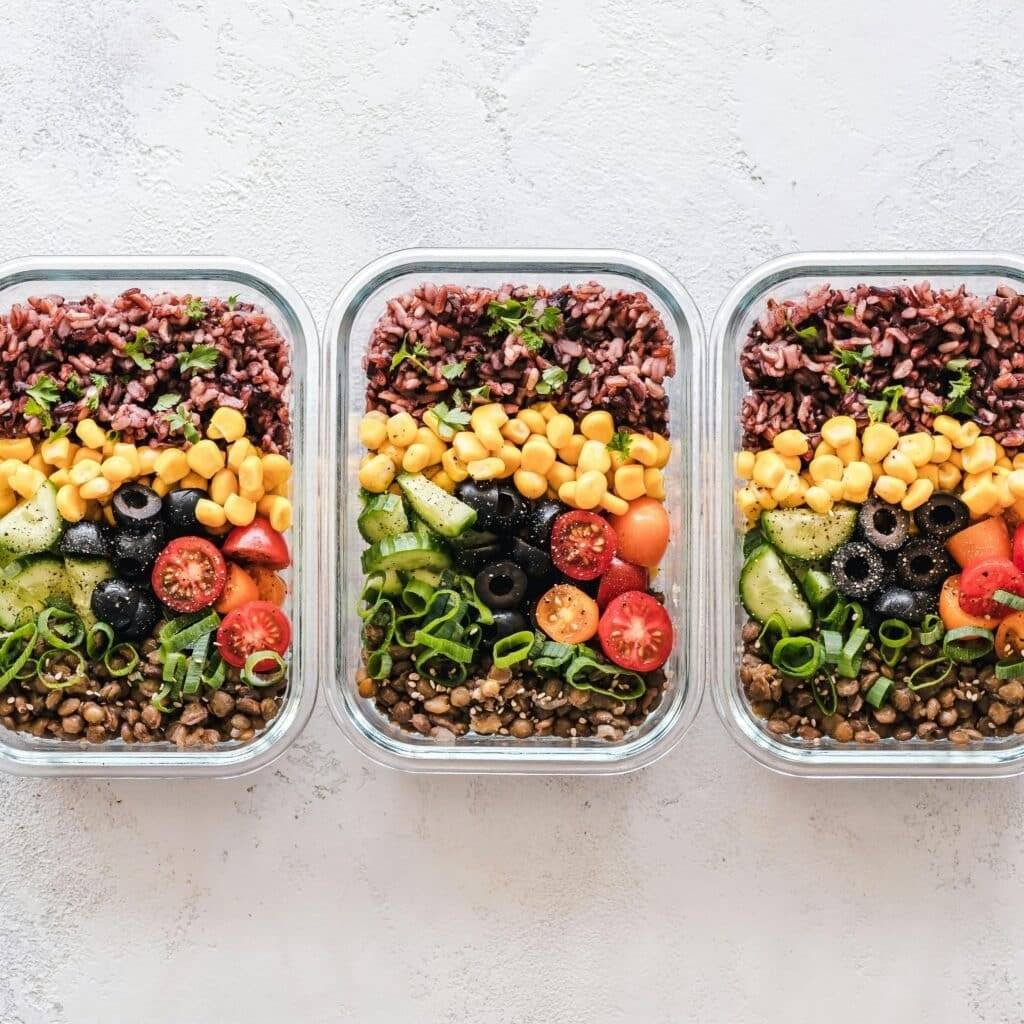
New Parents: Survival Mode Meal Planning
Your meal planning strategy should adapt to your family’s changing needs and circumstances.
- Freezer meal prep: Prepare meals during pregnancy or arrange meal trains
- One-pot wonders: Minimal cleanup, maximum nutrition
- Slow cooker reliance: Set it and forget it convenience
- Healthy convenience foods: When time is more valuable than money
Families with Young Children: Flexibility and Nutrition
- Kid-friendly base meals: Build adult flavors on top of simple kid favorites
- Hidden vegetable strategies: Blend vegetables into sauces and soups
- Batch cooking kid favorites: Muffins, pancakes, and healthy snacks
- Teaching opportunities: Include kids in age-appropriate cooking tasks
Busy Professionals: Efficiency and Quality
- Weekend batch prep: Wash, chop, and portion ingredients for the week
- Quality convenience items: Pre-cut vegetables when time is limited
- Sheet pan and one-pot meals: Minimal prep and cleanup
- Strategic restaurant substitutions: Master copycat recipes for favorite takeout meals
Empty Nesters: Right-Sizing and Exploration
- Smaller batch cooking: Adjust recipes for two people
- Quality over quantity: Invest in better ingredients for special meals
- Culinary exploration: Time to try new cuisines and techniques
- Social meal planning: Cooking for friends and family gatherings
Tech tools that help you plan meals on a budget
Using technology wisely can make meal planning easier and help you save money without making things more complicated.
Important tools and apps
Apps for stores: shopping lists, digital coupons, and deal alerts
- Apps like Ibotta, Checkout51, and others that give you cash back automatically offer rebates
- Recipe scaling tools: Easily adjust recipes for your family size
- Inventory apps: Track what you have at home to avoid duplicate purchases
Meal Planning Strategies
- Pinterest recipe boards: Organize meals by season, dietary needs, or cooking method
- Simple spreadsheets: Track successful meals and their costs
- Calendar integration: Plan meals around your family’s schedule
- Shopping list automation: Apps that generate lists from your meal plans
Common Meal Planning Mistakes That Waste Money
Learn from these frequent pitfalls to avoid setbacks in your budget meal planning.
The Pinterest Perfect Trap
Mistake: Planning elaborate meals that require expensive specialty ingredients you’ll use once.
Solution: Start with simple meals using ingredients you already know and use. Gradually add complexity as your skills and confidence grow.
The Bulk Buying Illusion
Mistake: Buying large quantities of perishable items because the unit price is better, then watching them spoil.
Solution: Calculate the true cost, including waste. Sometimes paying slightly more for the right quantity is more economical. But bulk buying isn’t the only trap budget meal planners fall into…,
The Perfectionism Problem
Mistake: Abandoning meal planning entirely when you miss a week or don’t follow your plan perfectly.
Solution: Treat meal planning like any other skill, expect a learning curve, and celebrate progress over perfection. And even when you’re consistent, one more challenge tends to sneak in…
The Monotony Trap
Mistake: Make the same five meals repeatedly until your family rebels against the budget plan.
Solution: Build variety within your framework. Learn multiple ways to prepare the same basic ingredients to prevent boredom.
Your 30-Day Meal Planning and Grocery Savings Challenge
Ready to transform your food budget? Here’s a step-by-step plan to implement everything you’ve learned:
Week 1: Foundation Building
- Track every food expense for one week, groceries, restaurants, coffee shops, everything
- Inventory your pantry, freezer, and refrigerator
- Plan one week of meals using only ingredients you already have
- Try one new store-brand product you use regularly
Week 2: Strategic Shopping
- Review store flyers before planning your weekly menu
- Plan meals around sale items and seasonal produce
- Organize your shopping list by store layout
- Calculate unit prices for 5 items you buy regularly
Week 3: Cooking and Preparation
- Try batch cooking one grain, one protein, and one sauce base
- Plan one leftover transformation meal
- Cook entirely from scratch for 5 out of 7 dinners
- Experiment with one new budget-friendly protein source
Week 4: System Optimization
- Calculate your total food spending for the month
- Identify your three most successful money-saving strategies
- Plan next month’s meals using seasonal ingredients
- Set a realistic target for next month’s food budget
The Real Truth About Budget Meal Planning
Here’s what families who’ve mastered budget meal planning want you to know: it’s not about eating boring food or spending your entire weekend in the kitchen. It’s about being intentional with your food choices so you can eat better while spending less.
Constraints Create Creativity
The most successful budget meal planners share a common secret: they’ve learned to see constraints as creativity boosters, not limitations. Having a smaller budget forces you to learn new skills, try new ingredients, and discover that some of the world’s most delicious foods are also the most economical.
Frugal Meals Are Often Healthier Meals
You’ll find that planning and preparing more of your own food doesn’t just save money, it often improves your family’s health, brings you together around the dinner table, and gives you the satisfaction of creating something delicious from simple ingredients.
Intentionality Changes Everything
Yes, it requires more thought and planning than grabbing whatever looks good at the store. But that intentionality is exactly what transforms your relationship with food and money. You’ll start seeing ingredients instead of just products, possibilities instead of just prices, and meals instead of just feeding the family.
The families who thrive with budget meal planning understand that their lifestyle isn’t about deprivation; it’s about abundance. You will experience an abundance of flavor, spend more time with your family, have more money left over for other priorities, and feel a great sense of satisfaction from feeding your family within your means.
Your journey to better, cheaper eating starts with your next grocery trip. Every meal is an opportunity to practice these skills, and every dollar saved is a step toward your larger financial goals.
The question isn’t whether you can afford to eat well on a budget; it’s whether you can afford to keep overspending on food when better options are within reach.
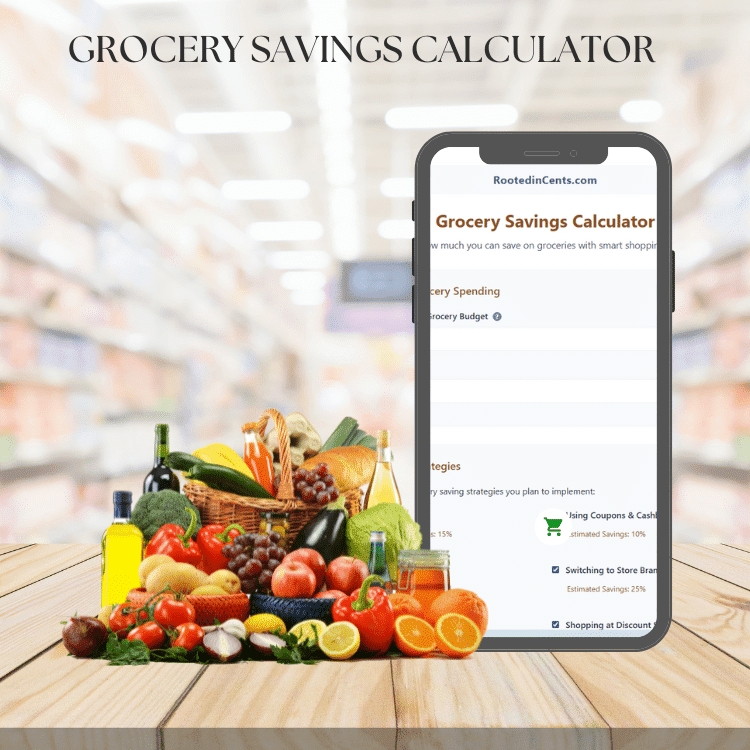
Try our free Grocery Savings Calculator to see exactly how much you could save each week with small, realistic changes to your shopping and meal planning habits.
